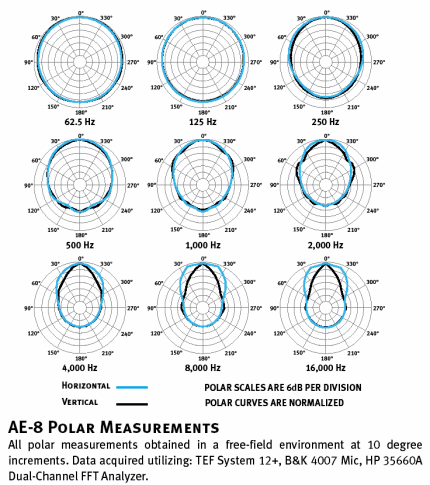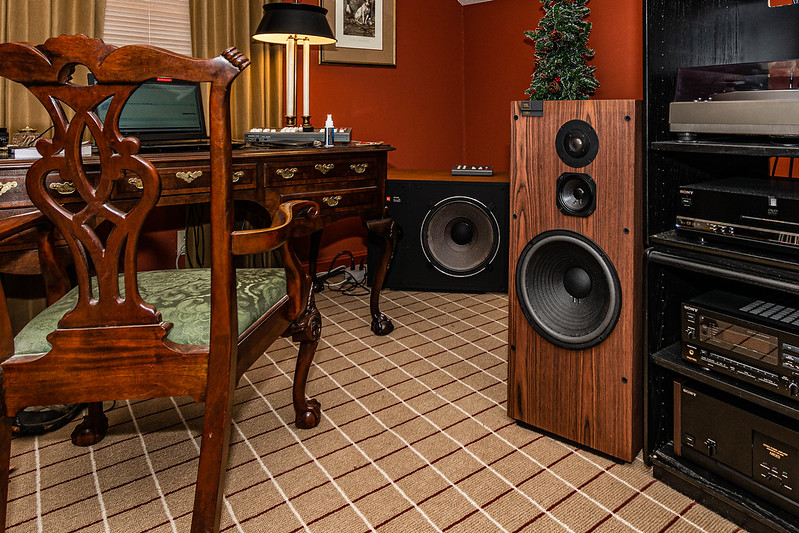kach22i
Active Member
Do your research, and hopefully you will soon realize that most of the articles and videos out there are catering to the home theater crowd or large stereo rooms (hence the multi-sub approach).
This means they are trying to get good bass almost everywhere when you are flying solo and only need it where your chair is at (the studio mixing room articles might actually be more applicable).
This is a HUGE difference, after all it's 2-channel stereo and not 5.1 or 7.1 HT with a dedicated channel already optimized.
However you can make it 2.1 with a rack mounted crossover after the preamp, I did not go that route.
Good news is some of the basic acoustic principals apply to your small room, a one or two person sweet-spot listening room.
So if you have one old sub, then you are in luck, I have a solution that just might work for you.
Using the KISS Method I'll start with some pictures (see below).
Video/article-1:
Ideal Subwoofer Placement & Pressurization – Acoustic Fields
White Paper:
Soundoctor - all about subs
Thread on subwoofer crossovers cause phase issues:
Subwoofers and Time Relationships | What's Best Audio and Video Forum. The Best High End Audio Forum on the planet!
Add it all up..........
1. Must get subwoofer away from walls.
2. Subs are more directional than advertised.
3. LP and CD bass is mono (recording engineer claimed so - read White Paper)
4. Try inverting/switching IC wires going to subwoofer.
5. Better to use Low Level inputs (interconnect cables) from dual output preamp than hooking up with speaker wires via High Level Inputs.
6. In all cases experiment and find what works for you, I only know what worked for me in my room - results may vary.
Picture of my dark room below, a work in progress.
What you see is the loudspeakers in typical position, with chair set back a little from sweet-spot just like dipoles are supposed to be, but the subwoofer is actually in a near-field listening position because bass wavelengths are so long. This is called a "pressure zone" listening position where you heard the sub first, and not the room.
My settings are near the minimal volume level, and crossover frequency also near the 37 Hz minimum.
The sound of a drum kit is dead center and at the proper height too.
The less junk you have between your speakers and on the front wall the better your sound-staging should be. My equipment rack on the right is scheduled to be moved out of there when I remove the closet wing-wall to the left. Then the speakers can be moved farther apart, and my seat set further back. I might have to adjust toe-in again at the same time.
It pained me at first to put the sub in the middle, but acoustics above convenience.



Good luck and happy listening.
This means they are trying to get good bass almost everywhere when you are flying solo and only need it where your chair is at (the studio mixing room articles might actually be more applicable).
This is a HUGE difference, after all it's 2-channel stereo and not 5.1 or 7.1 HT with a dedicated channel already optimized.
However you can make it 2.1 with a rack mounted crossover after the preamp, I did not go that route.
Good news is some of the basic acoustic principals apply to your small room, a one or two person sweet-spot listening room.
So if you have one old sub, then you are in luck, I have a solution that just might work for you.
Using the KISS Method I'll start with some pictures (see below).
Video/article-1:
Ideal Subwoofer Placement & Pressurization – Acoustic Fields
White Paper:
Soundoctor - all about subs
Thread on subwoofer crossovers cause phase issues:
Subwoofers and Time Relationships | What's Best Audio and Video Forum. The Best High End Audio Forum on the planet!
Add it all up..........
1. Must get subwoofer away from walls.
2. Subs are more directional than advertised.
3. LP and CD bass is mono (recording engineer claimed so - read White Paper)
4. Try inverting/switching IC wires going to subwoofer.
5. Better to use Low Level inputs (interconnect cables) from dual output preamp than hooking up with speaker wires via High Level Inputs.
6. In all cases experiment and find what works for you, I only know what worked for me in my room - results may vary.
Picture of my dark room below, a work in progress.
What you see is the loudspeakers in typical position, with chair set back a little from sweet-spot just like dipoles are supposed to be, but the subwoofer is actually in a near-field listening position because bass wavelengths are so long. This is called a "pressure zone" listening position where you heard the sub first, and not the room.
My settings are near the minimal volume level, and crossover frequency also near the 37 Hz minimum.
The sound of a drum kit is dead center and at the proper height too.
The less junk you have between your speakers and on the front wall the better your sound-staging should be. My equipment rack on the right is scheduled to be moved out of there when I remove the closet wing-wall to the left. Then the speakers can be moved farther apart, and my seat set further back. I might have to adjust toe-in again at the same time.
It pained me at first to put the sub in the middle, but acoustics above convenience.

Good luck and happy listening.




